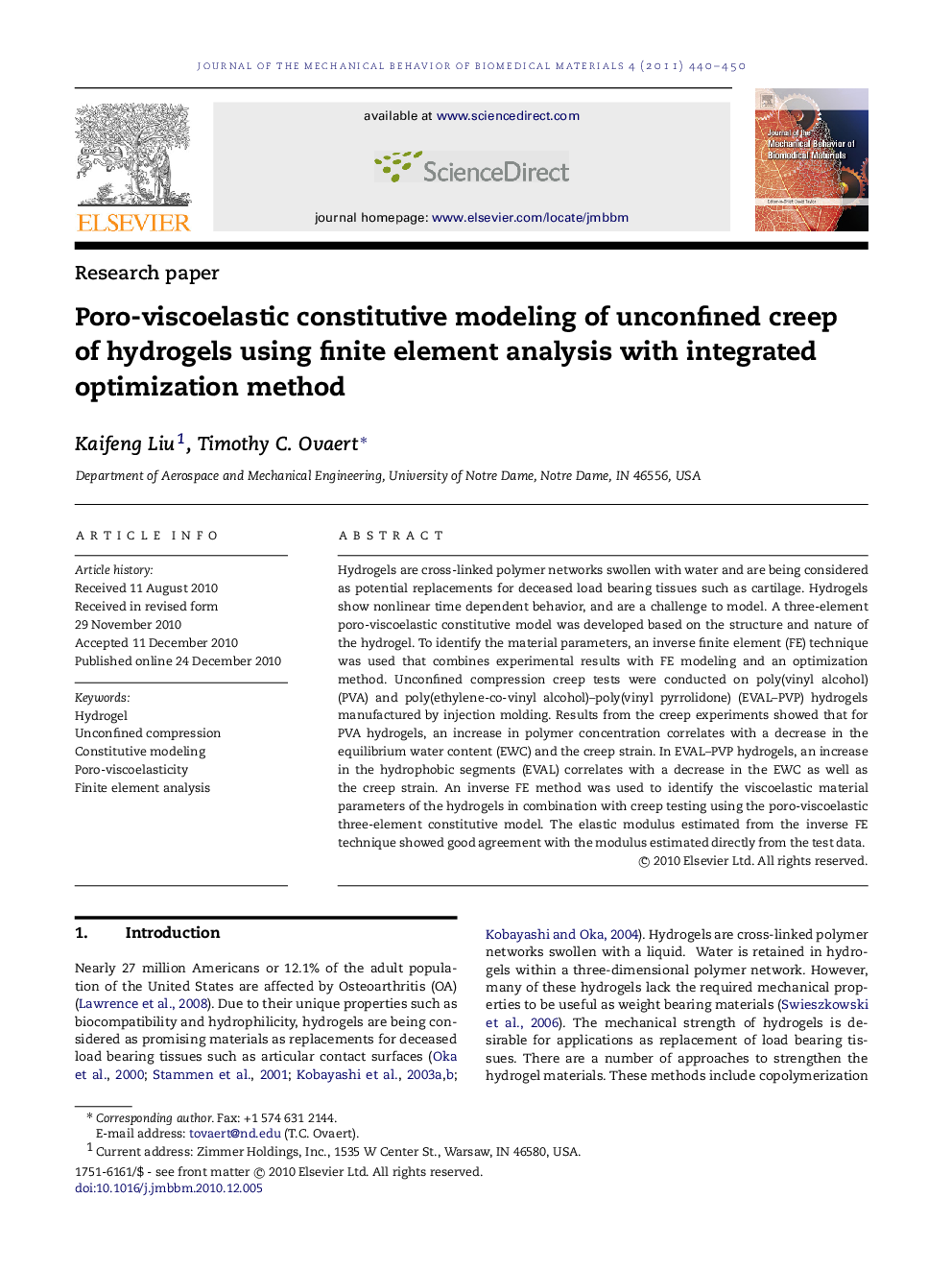| کد مقاله | کد نشریه | سال انتشار | مقاله انگلیسی | نسخه تمام متن |
|---|---|---|---|---|
| 811451 | 1469146 | 2011 | 11 صفحه PDF | دانلود رایگان |

Hydrogels are cross-linked polymer networks swollen with water and are being considered as potential replacements for deceased load bearing tissues such as cartilage. Hydrogels show nonlinear time dependent behavior, and are a challenge to model. A three-element poro-viscoelastic constitutive model was developed based on the structure and nature of the hydrogel. To identify the material parameters, an inverse finite element (FE) technique was used that combines experimental results with FE modeling and an optimization method. Unconfined compression creep tests were conducted on poly(vinyl alcohol) (PVA) and poly(ethylene-co-vinyl alcohol)–poly(vinyl pyrrolidone) (EVAL–PVP) hydrogels manufactured by injection molding. Results from the creep experiments showed that for PVA hydrogels, an increase in polymer concentration correlates with a decrease in the equilibrium water content (EWC) and the creep strain. In EVAL–PVP hydrogels, an increase in the hydrophobic segments (EVAL) correlates with a decrease in the EWC as well as the creep strain. An inverse FE method was used to identify the viscoelastic material parameters of the hydrogels in combination with creep testing using the poro-viscoelastic three-element constitutive model. The elastic modulus estimated from the inverse FE technique showed good agreement with the modulus estimated directly from the test data.
Journal: Journal of the Mechanical Behavior of Biomedical Materials - Volume 4, Issue 3, April 2011, Pages 440–450